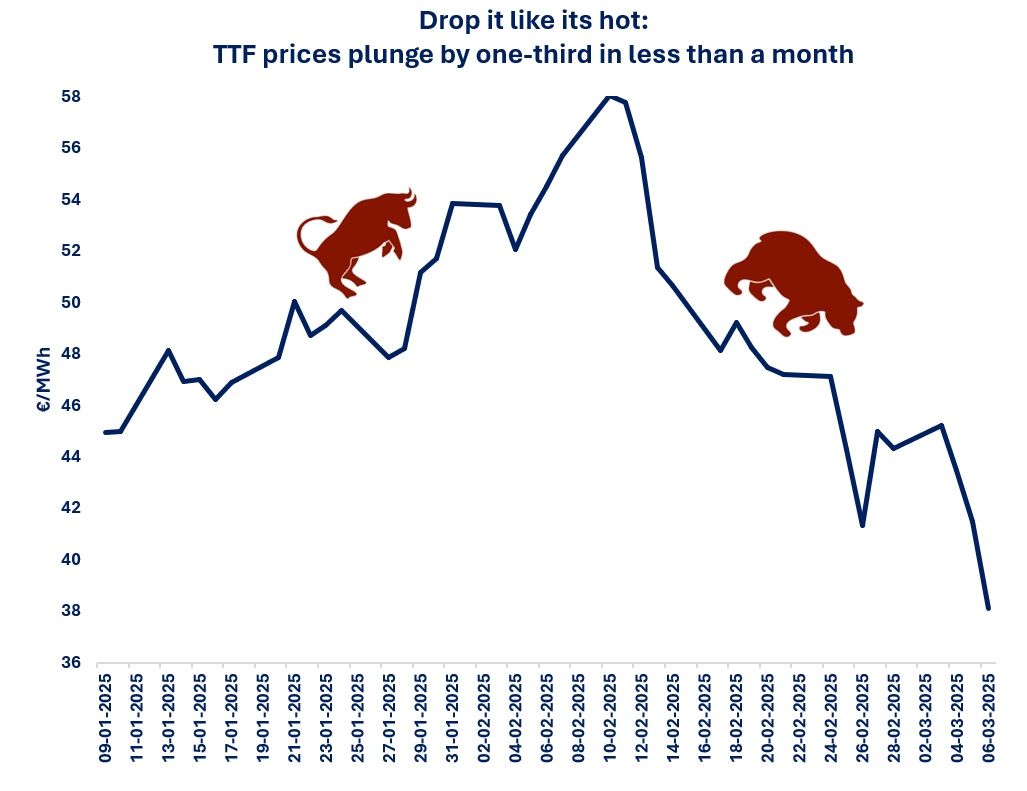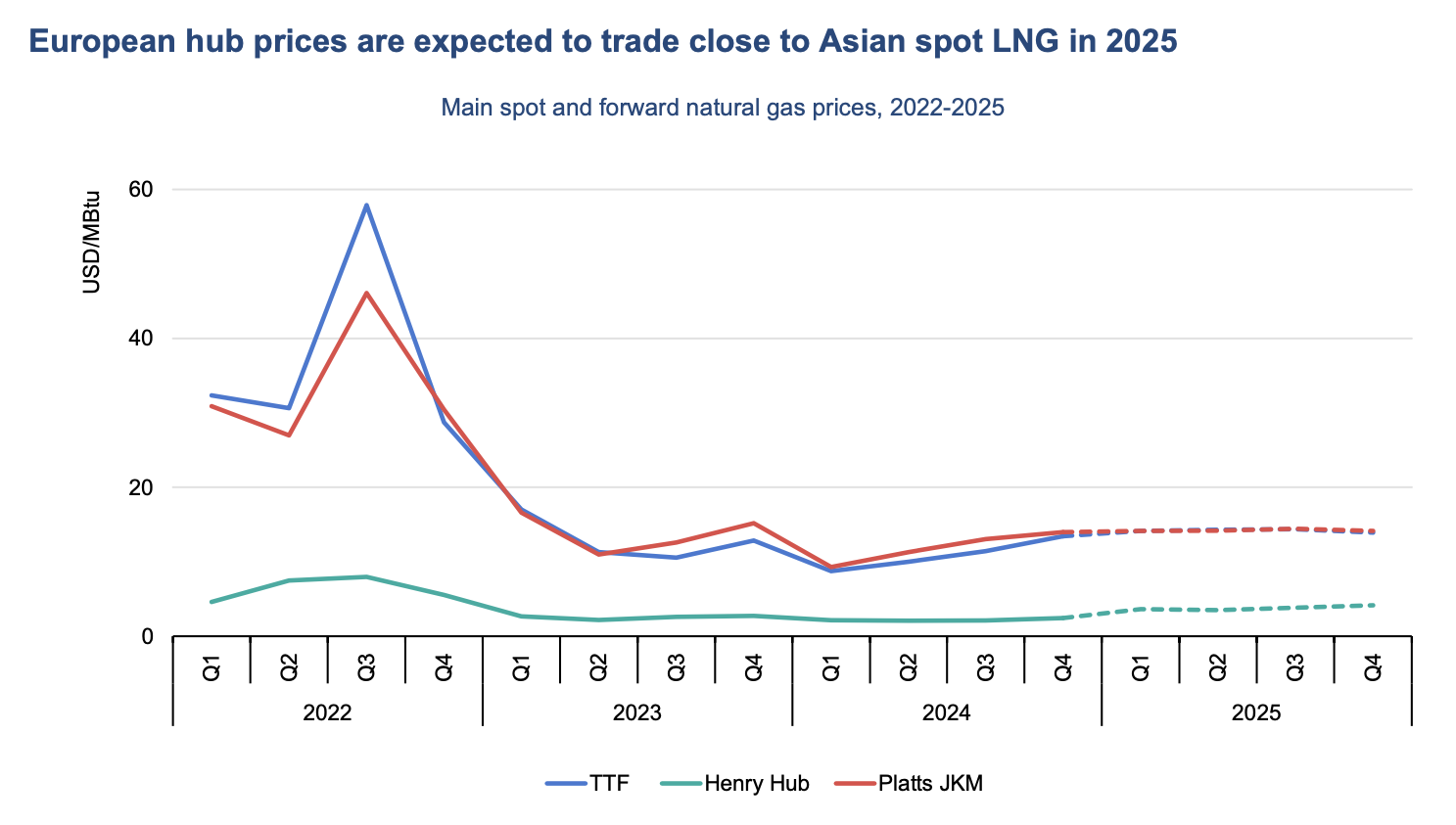

The rapid rise of prices up the right hand arm of the V, reflects a gas market transitioning from acute oversupply (Q1 & Q2) to a more balanced state (Q3 & Q4). As a result, there is a major shift underway in marginal pricing dynamics.
In an oversupplied market, US LNG export shut in dynamics are the key driver of gas prices in Europe and Asia (e.g. Summer 2019 and most of 2020). In a more balanced market European power sector switching dynamics act to anchor prices at TTF and JKM (e.g. most of 2017-18 and Winter 2019).
Forward curve wedged between switching & shut in ranges
As the European gas market recovers into Q4 2020, switching is coming back into focus as a key marginal price driver. The green shaded band in Chart 1 shows the core coal for gas plant switching price range.
The 2020 slump in gas prices has seen most European coal plants out of merit on a variable cost basis versus CCGTs. However the sharp gas price rally over the last three months has lifted the TTF forward curve to re-engage with the lower boundary of this switching range.
The switching range acts as important resistance for rising gas prices as can be seen in Chart 1. As prices increase into this range, CCGT load factors start to decline, reducing gas demand and easing market tightness. The current TTF forward curve is consistent with significant switching over the winter months (with higher power demand & gas prices), but with CCGTs dominating coal in the summer months.
While the switching range acts as TTF price resistance, the US export shut in range (shown as the grey band in Chart 1) acts as price support. This is particularly the case across the lower demand summer months. If prices fall into the US shut in range, then cargo cancellations from the more expensive export trains act to reduce LNG flows to Europe, supporting the market.
Chart 1 shows that Summer 2021 forward prices levels are now above the US shut in range. Beyond 2021, TTF & JKM forward prices continue to diverge from the US as the LNG market balance tightens.
Source: Timera Energy. This is an abstract from the full article which can be found on the Timera Energy website.
Follow on Twitter:
[tfws username=”TimeraEnergy” height=”700″ width=”350″ theme=”light” color=”#FAB81E” tweets=”2″ header=”yes” footer=”yes” borders=”yes” scrollbar=”yes” background=”yes”]













